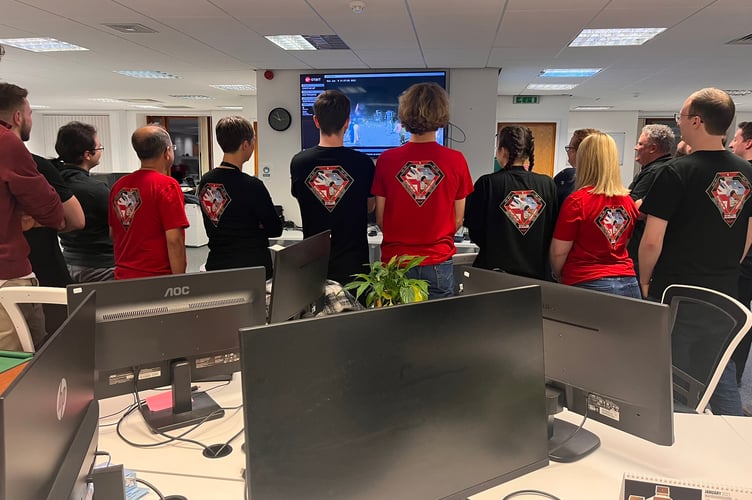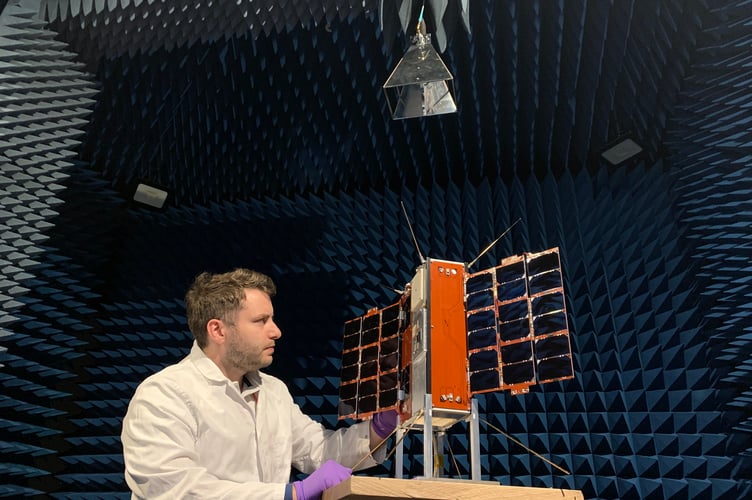The team at Alton-based satellite builders In-Space Missions expressed deep disappointment and sadness following the failure of the Virgin Orbit’s LauncherOne rocket on Monday night.
The rocket carrying In-Space’s two Prometheus-2 satellites launched from a modified Boeing 747 airliner called ‘Cosmic Girl’ around two hours after taking off from Spaceport Cornwall in what was the UK’s first ever satellite launch from British soil.
However, the launch failed after suffering an “anomaly” short of making orbit and the rocket parts and the satellites it was carrying fell back to Earth.

In-Space Missions, which is based in Omega Park, Alton, specialises in the design, manufacture and operation of small, innovative space missions.
In-Space CEO Doug Liddle said: “The In-Space team are devastated that the Prometheus-2 satellites were lost at sea following the failure of the launch from Cornwall.
“The two satellites we co-designed and built with the Defence Science and Technology Laboratory (DSTL) and Airbus would have been two of the most complex and powerful cubesats to orbit the Earth.
“Working so closely with both DSTL and Airbus has been an exceptional experience and the In-Space team is deeply sad to not be following that collaboration through to the next stage to operate the satellites and deliver an amazing set of capability demonstrations to DSTL and the Ministry of Defence.
“Our hearts also go out to our co-passengers on the launch as well as the brilliant teams at Virgin Orbit, Spaceport Cornwall, the UK Space Agency and KISPE who made this historic first attempt at UK launch a reality.”
The Prometheus-2 cubesats were each the size of a cereal box and were owned by the DSTL on behalf of the Ministry of Defence.

They were co-funded by Airbus Defence and Space who designed them jointly with In-Space Missions.
The cubesats had a mass of 8.5kg and measured just 30cm x 20cm x 10cm.
They were built to provide a test platform for sophisticated Earth imaging and radio signal monitoring (including GPS), paving the way for a more collaborative and connected space communication system with the UK’s combat allies.
The cubesats each had separate equipment installed to test future concepts in support of the Ministry of Defence’s ISTARI programme for future space-based intelligence and surveillance.

Despite this setback, Mr Liddle vowed to bounce back: “We will all recover and we’ll be back – stronger than ever before.”
The so-called ‘StartMeUp’ launch was watched live through the Virgin Orbit YouTube channel by more than 400,000 people, while a crowd also gathered by the runway at Spaceport Cornwall in Newquay hopeful of watching a moment in history.
Cosmic Girl took off on schedule just after 10pm on Monday and all seemed to be going to plan as it flew out over the ocean before blasting its LauncherOne rocket into space shortly after 11pm.
But the twist came at around 11.45pm when Virgin Orbit announced: “We appear to have an anomaly that has prevented us from reaching orbit.”
Virgin Orbit has since said its Launcher One rocket failed because of a premature shutdown.
The company stated that initial data indicated the first stage of the rocket performed as expected and reached space altitudes, but later in the mission, at an altitude of approximately 180km, the upper stage experienced an anomaly which "prematurely ended" the first burn, causing the rocket components and payload to fall back to Earth.
Virgin Orbit has launched a formal investigation into the source of the second stage failure and hopes to return to Spaceport Cornwall for additional launches later this year.
The UK’s Space Accident Investigation Authority (SAIA), based in Farnborough, and the Federal Aviation Administration (FAA) in the USA will jointly oversee an investigation into the system anomaly that occurred during the firing of the rocket’s second stage engine.





Comments
This article has no comments yet. Be the first to leave a comment.